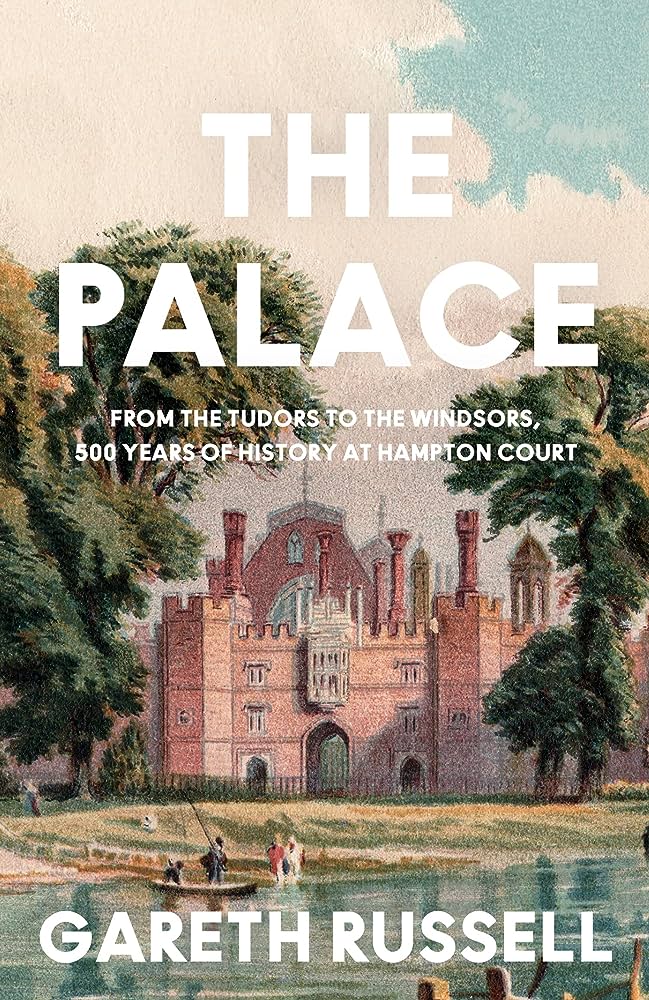The Dowager Countess of Deloraine, who was governess to the children of George II at Hampton Court and other royal homes, was a notorious bore—so much so that her “every word” made one “sick”, according to the waspish courtier Lord Hervey. When the Countess naively asked him why everyone was avoiding her, Hervey replied with exquisite irony that “envy kept the women at a distance, despair the men”.
This kind of witty, skittish anecdote is scattered throughout Gareth Russell’s scintillating hybrid of a book, which is partly a biography of a place and partly something stranger: an episodic history of England from Tudor times to the present, illustrated by lightning-flashes of gossip and politics, set against the handsome backdrop of Hampton Court.
Russell, who is a novelist as well as a historian, shows some interest in how events have physically shaped the Thames-side palace. Successive owners have left their particular stamp, as too have individual visits. We learn, for instance, that Cardinal Wolsey made extensive repairs before receiving the Constable of France in 1527. An earlier owner, Lord Daubeney, was so keen to please Henry VII, who loved real tennis, that before having him to stay in 1500, he built a court. To this day, visitors to Hampton Court can watch or book a lesson in this eccentric, wonderful game, which is the progenitor of the modern (and much less interesting) version of tennis.
Most, Russell declares, come to the house more for its stories than its architecture. This, at any rate, is his own preference, as is clear from the relish with which he recounts the outrageous sexual crimes of which Anne Boleyn was accused. Arrested while watching real tennis at the palace, she was charged with seducing a courtier a few weeks after giving birth, which seems unlikely. Moreover, it was asserted, she had enjoyed an energetic affair with her own brother, during which the incestuous pair engaged in vigorous French-kissing. Who had witnessed this was anyone’s guess. As Russell wryly observes, “treason and adultery are not usually spectator events”.
The palace emerges as an enduring architectural symbol of royal lust. For it had been Henry VIII’s obsession with Boleyn, and fury with Wolsey for failing to facilitate their marriage, that led the King to seize the house from the Cardinal. It was there, later, that a new translation of the Bible was commissioned by James I, a King known for his passions for younger men. In response to any who doubt His Majesty was gay, Russell points to a letter to him, in which the Duke of Buckingham confessed his thoughts were “only bent on having [your] legs soon in my arms”.
James’s grandson, Charles II, showed staggering tactlessness in installing his mistress, Barbara Villiers, as an attendant to his wife. The latter almost fainted on learning of it, then developed a nosebleed when Charles remarked that he couldn’t rescind the order, since he had made the woman a promise. He later granted Villiers extensive apartments in the palace.
This mistress, later Duchess of Cleveland, seems to have been a loathsome individual, but her sex appeal was extraordinary. The priapic diarist Samuel Pepys, although a Protestant, attended a Catholic mass on Christmas Eve purely in order to feast his eyes on her charms. The sight so overwhelmed him that he had a spontaneous orgasm. This happened with his “eyes open”, an awed Pepys noted in his diary, before adding with unexpected primness, “and god forgive me for it, it being in the Chapel”.
There is the odd misstep. It’s surprising that a writer of Russell’s confidence feels the need to call Cromwell “the famous Parliamentarian general”. And he’s wrong that Michael Faraday, who latterly lived in a grace-and-favour cottage at Hampton Court, discovered electromagnetic rotations. That was the Danish physicist Hans Christian Orsted. Faraday used them to invent the electric motor.
His book is less interested in the spirit of place than in the spirits—in, say, the spectral footprints left by Charles I, as he escaped Cromwell’s guards through the Privy Gardens, or the phantasmagorical echo of Henry VIII’s grunts, as he threw himself into a game of real tennis, to hold at bay his middle-aged spread.
Perhaps inevitably, the later chapters of Russell’s long chronological sweep pale by comparison with his earlier ones. Try as he might, his account of the current Princess of Wales visiting Hampton Court in 2016, wearing “nude heels from L.K. Bennett”, cannot compete with the description by a Venetian diplomat of Anne Boleyn’s “middling stature, swarthy complexion” and “bosom not much raised”, the cold critique punctuated with praise of the Queen’s eyes, “which are black and beautiful, and take great effect”.
Nevertheless, it’s hard to imagine anyone writing a much better version of the book Russell sets out to write than the racy delight he has handed in here.

